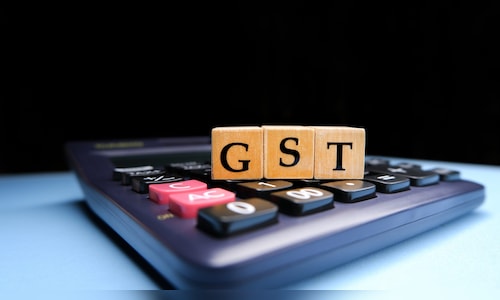Our Terms & Conditions | Our Privacy Policy
Decoding India’s GST Numbers | Record high collections indicate robust economic activity
India recorded its highest-ever monthly Goods and Services Tax (GST) collections in April 2025, with revenues reaching ₹2.36 lakh crore—a year-on-year growth of 12.6%.
The figure reflects transactions made in March, the final month of the 2024–25 financial year, a period typically associated with intensified business activity due to annual reconciliations and stock clearances. This year, the pattern was further shaped by strong domestic consumption and a sharp increase in import volumes, particularly linked to export demand.
“Over 12% growth in GST collections in April 25, despite geopolitical headwinds, is encouraging. Also, it’s good to see that most of the manufacturing states have witnessed double digit growth,” said Pratik Jain, Partner, PwC India.
Also read: India records highest ever GST collections at ₹2.36 lakh crore in April
What’s Driving the Growth?
Multiple structural and cyclical factors have contributed to the record numbers.
Domestic GST collections rose by over 9%, pointing to continued resilience in consumption and production activity. This trend aligns with broader signs of recovery in both rural and urban demand.GST collected on imports surged by 20.8%. This growth is linked to higher export volumes and anticipation of new US tariffs, prompting Indian exporters to advance shipments before reciprocal trade duties came into force.
“This (growth) signifies that India’s GST ecosystem is not just expanding—it’s deepening across geographies. The growing contributions from smaller states reflect the widening tax base and a shift toward more inclusive, pan-India economic formalisation. With such a strong start to FY26, India seems well on course for sustained and broad-based fiscal growth in the long term,” says Sivakumar Ramjee, Executive Director- Indirect Tax, Nangia Andersen LLP.
An expanding tax base also played a key role. More than 2.5 million new GST registrations were recorded in FY25, bringing the total to 15 million. Uttar Pradesh, Maharashtra, Gujarat, Karnataka, and Tamil Nadu now each account for over a million registered taxpayers each. Maharashtra leads in absolute collections, while Uttar Pradesh has the highest number of registrations.
Efforts to improve compliance and enforcement have further contributed. Crackdowns on fake input tax credit claims, nudges for timely filings, and faster refund processing have made the system more efficient and transparent. Exporters have reported eased liquidity pressures as refunds are disbursed more quickly.
Also read: Mumbai property registrations hit 13-year high in April 2025
Collections also improved across states. Key producing and consuming states posted growth rates between 11% and 16%, reflecting a more balanced spread of economic activity than in previous months.
Abhishek Jain, Indirect Tax Head and Partner at KPMG, said the record collections were largely driven by year-end reconciliations and pointed to healthy economic activity.
MS Mani, Partner at Deloitte India, said the milestone reflected “a strong economic performance in the last month of the previous fiscal year.” He added that “the trend of increase in refunds observable during the past few months has continued” and that collections have been “uniformly high in all the major producing/consuming states… in the range 11% to 16%.” He also pointed out that more than five states now have over 10 lakh GST registrations, out of a total of 1.5 crore nationwide.
Vivek Jalan, Partner at Tax Connect Advisory Services LLP, pointed to growing disparities between state and central GST collections, citing Tamil Nadu where state GST rose by 17% while the Centre’s share grew 9.3%.
Also read: Taxpayers with LTCG up to ₹1.25 lakh can now use simplified ITR forms, says CBDT
Saurabh Agarwal, Tax Partner at EY India, said the record figures “underscore the Indian economy’s underlying strength amid global uncertainties.” He linked the rise in revenue to export activity, including to the US ahead of the proposed tariffs, and noted the government’s efforts to speed up refund processes. While he expects some moderation in the coming months, he believes the outlook remains positive due to emerging manufacturing opportunities.
Mahesh Jaising, Partner and Leader, Indirect Tax at Deloitte India, said the 9.9% growth in domestic collections and the 20.8% rise in import-based GST were “led by the export growth as visible by the significantly higher export refunds.” He said the higher number of registrants suggests a broadening of the tax base that should support future collections.
The Road Ahead
Although April’s collections offer a strong start to FY26, analysts are cautious about projecting similar growth through the year. Trade volatility, pending GST rate revisions—especially for sectors like health and life insurance—and geopolitical uncertainty could affect future trends.
Arvind Shrivastava has taken charge as the revenue secretary amid these developments. A 1994-batch IAS officer from the Karnataka cadre, Shrivastava now oversees the task of maintaining revenue momentum while advancing the long-awaited GST rate rationalisation.
He is also expected to manage the transition to a new income tax framework and oversee the phasing out of the GST compensation cess, set to end in March 2026. The cess currently forms a key component of GST revenue.
Kishan Arora, Partner, Grant Thornton Bharat, stated it would be interesting to see if this growth trend would sustain in the coming months, especially amidst ongoing global uncertainties.
Also read: India’s new Revenue Secretary has a daunting list of tasks
[ad_1]
Images are for reference only.Images and contents gathered automatic from google or 3rd party sources.All rights on the images and contents are with their legal original owners.
[ad_2]



Comments are closed.